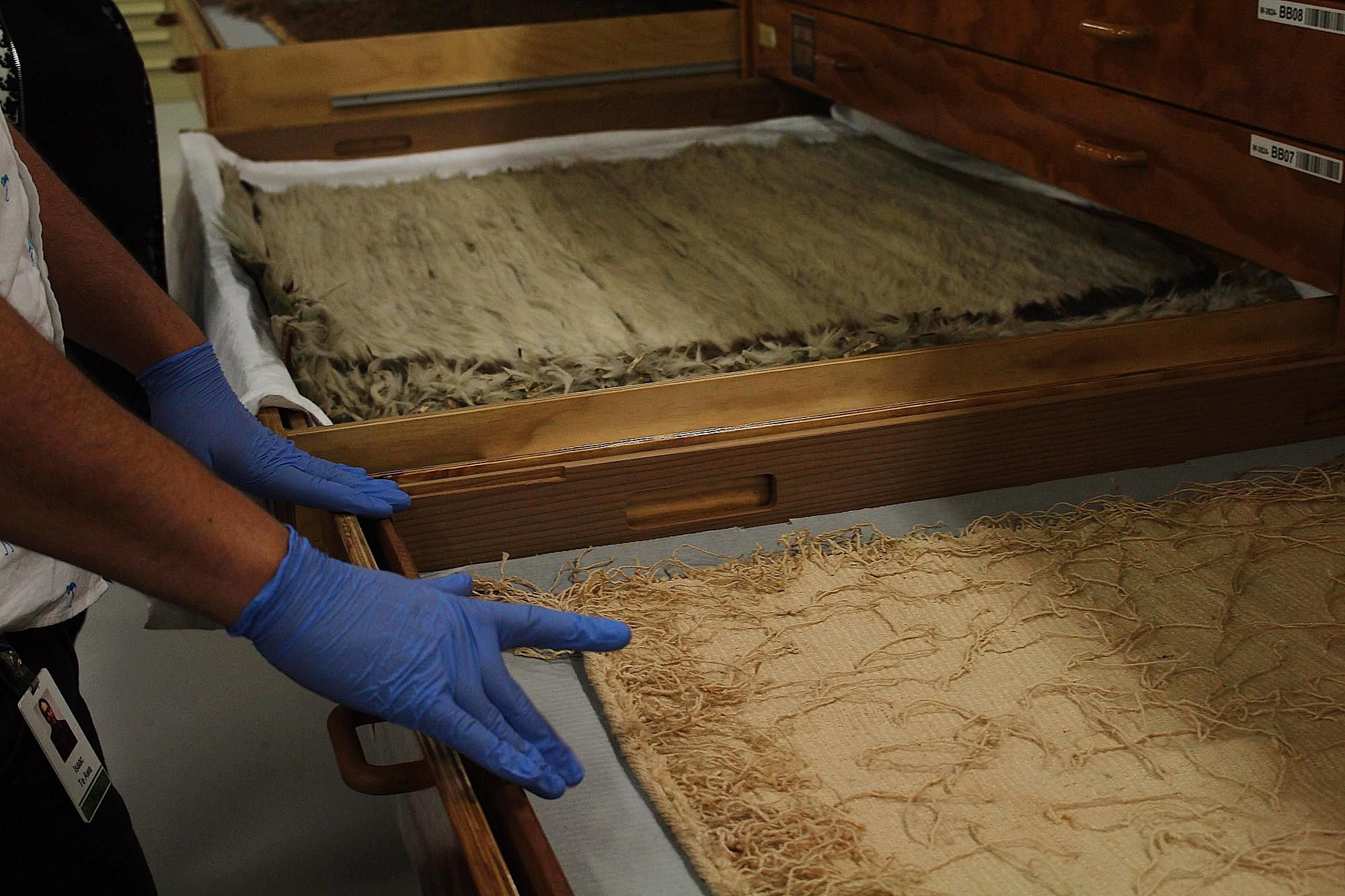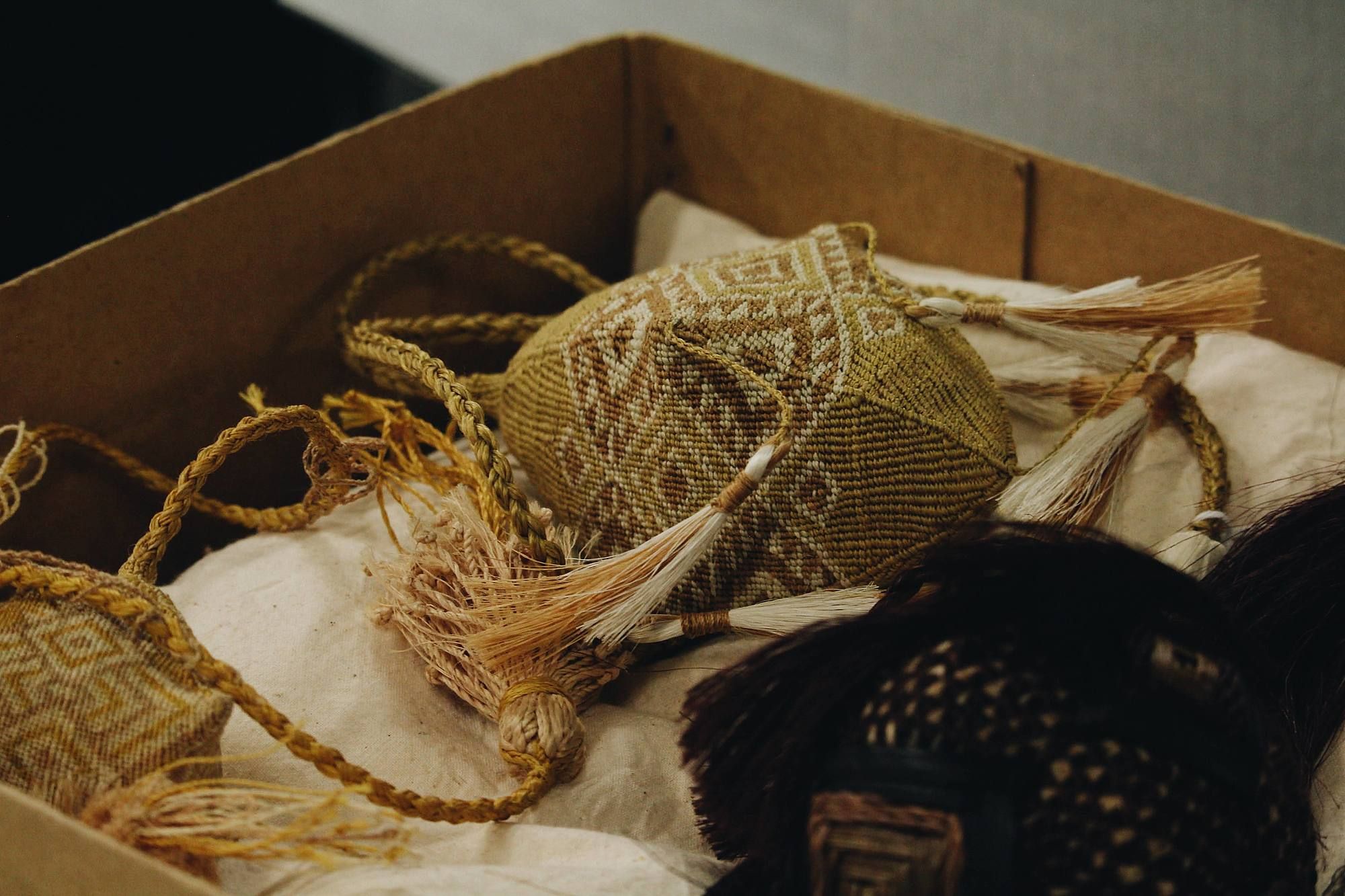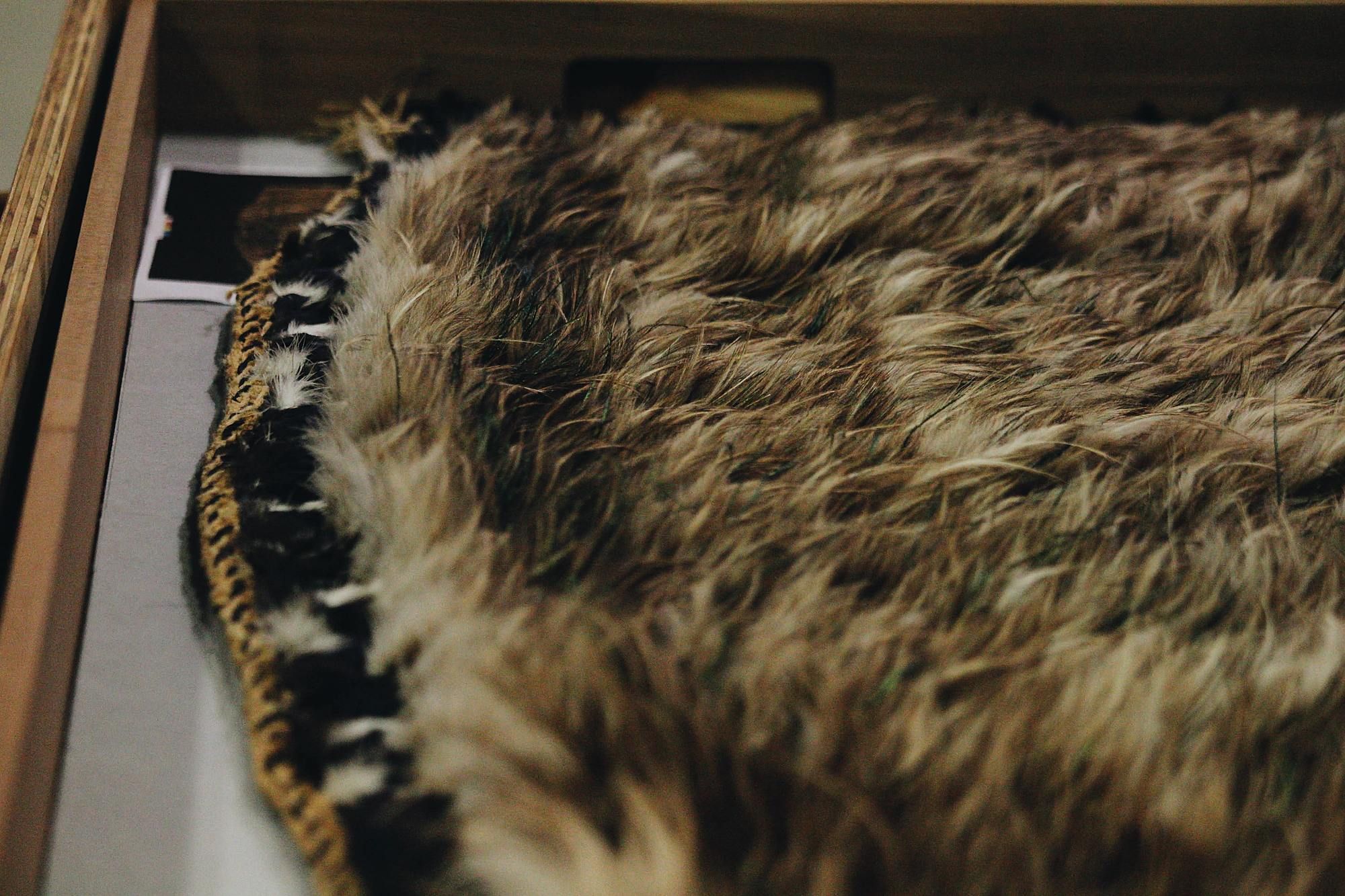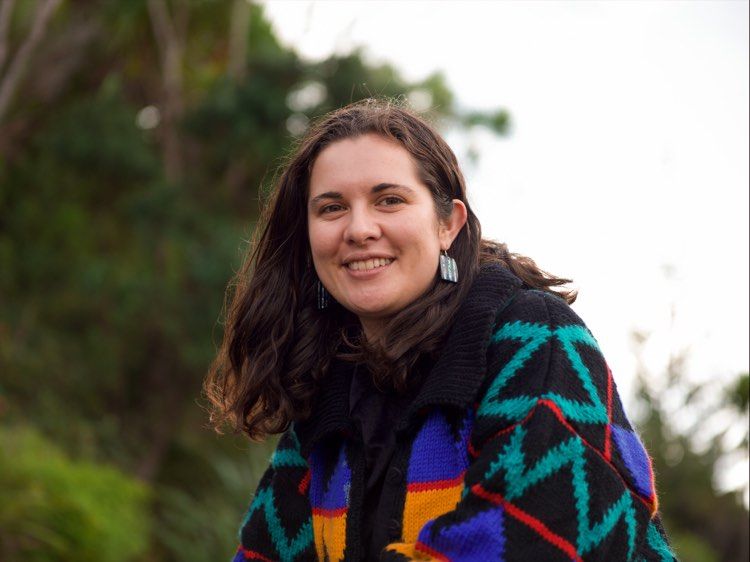Ngā Taonga Tuku Iho: Taonga Preservation for Generations
Sinead Overbye talks to Vicki-Anne Heikell and Paul Diamond of the Alexander Turnbull Library about their work with historical collections and the future of storing and accessing our taonga.
Ngā Taonga Tuku Iho is a five-part video series produced and directed by Kahu Kutia (Ngāi Tūhoe) looking at the relationships Māori have with taonga today.
In partnership with this series, Pantograph Punch will be exploring this same kaupapa with a similar deep dive into stories of kaitiakitanga, archiving, and taonga care.
For a long time, museums and archival institutions have been a place where Māori taonga have been locked away; disconnected from the places and people whose stories they tell. Often they are hidden away in private and public connections, slowly trying to find the right home again.
This series questions how Māori can gain access to their taonga, how life is breathed into these connections, and what the dreams are for the future of taonga care.
Photo: Renati Waaka
Vicki Anne Heikell MNZM (Te Whānau-a-Apanui) is New Zealand's leading Māori Paper Conservator. She is Field Conservator for the National Preservation Office, Alexander Turnbull Library, and formerly worked at the National Library of New Zealand and the National Museum of New Zealand, Te Papa Tongarewa.
Paul Diamond (Ngāti Haua, Te Rarawa, Ngāpuhi) is a historian, writer and award-winning broadcaster. He has previously worked as a Senior Oral Historian at the Ministry for Culture and Heritage, and a Senior Reporter on Māori Television, and is currently Curator, Māori, at the Alexander Turnbull Library, Wellington.
Sinead Overbye: What are your roles at the Alexander Turnbull Library?
Vicki-Anne Heikell: Typically, as a Field Conservator, I’d be on the road meeting with iwi and hapū and talking about their preservation aspirations. But in the past 18 months I’ve been engaging with more groups over Zoom and trying to develop different ways of delivering preservation information, over Zoom and via webinars.
Paul Diamond: What Vicki-Anne does is different from the rest of the people in the library. We’re all working with the collections that we care for and hold. Depending on the definitions, that’s either as kaipupuri taonga or as kaitiaki, if you think that ‘kaitiaki’ has an element of that custodial responsibility, which we have.
SO: Could you tell me more about the collections that you hold?
PD: The collections are huge. They are built on the collections of Alexander Turnbull, who had a huge interest in Aotearoa New Zealand and the Pacific. He amassed this big collection. Most of the object taonga went to Te Papa, which was then the Dominion Museum, but paintings, manuscripts, books and letters stayed with this library, which he gave to the King in his will. In 1918, when Turnbull died, that will was activated, and in 1920 the library opened.
When the Alexander Turnbull Library opened, the country didn’t even have a national library. All these things came together in the national library, and now we are a division of that. And Turnbull wasn’t really interested in photography, but now that’s one of the collections that is accessed a lot and has become really important in terms of digitisation.
SO: What are some of the highlights of this work for you so far?
PD: It’s definitely making connections. What we’re realising is that there’s a huge push at the moment for collections to be in the community. We were both at an amazing hui, Mārama: Manuscripts with Memory, that was convened by Waitangi Teepa and David Tipene-Leach in Hawke’s Bay. That was talking about a collection I’d heard about a few times – to do with the Repudiation Movement in the 1870s that David has a whānau connection to. Being at the hui was amazing for me because it brought home to me what it means to have a collection managed and controlled in the community.
VAH: It was fantastic. One of the things about it was that, after the whakatau, all of the manuscripts were in the whare and available to whānau and those who were connected, so everyone was able to sit around and look at them. And that, to me, is the key to preservation – because what are taonga without their stories? It was a really good illustration of how you see people connect, and how, once you make those connections, the preservation stuff is so much easier.
PD: The thing I'm saying a lot at the moment is there’s this strong sense in my head of taonga travelling through time. And it's a bit like that whakataukī – whatungarongaro te tangata, toitū te whenua, people come and go, but the land remains. But I'm wondering about taonga as well – because they travel through time, they generally survive. Sometimes they don't, but hopefully they do because of the decisions that people like us make. And they get to meet these people along the way. We come and go, but they're what endure, and then each generation kind of makes its own sense of the taonga.
SO: I love that idea. Do you have any other examples of taonga that have travelled through time in that way?
PD: A thing that's been on my mind is the book He Pukapuka Tātaku i Ngā Mahi a Te Rauparaha Nui, A Record of the Life of the Great Te Rauparaha (2020), which was edited and translated by a friend and colleague, Ross Calman, from a manuscript by his tipuna, Tamihana Te Rauparaha, about Te Rauparaha Nui from Ngāti Toa Rangatira. Recently, he and I got around to having a discussion about it. And there's a big story that Ross has told about how that manuscript was badly treated and misinterpreted. What he's done is the first proper translation. People like [early colonial interpreter and translator] John White deliberately misinterpreted it. They knew they had it wrong. But it really impugned the reputation of Tamihana Te Rauparaha, and people thought he was an idiot who couldn't write properly. But it was really because these Pākehā men had manipulated and misinterpreted this, and then it just got repeated. So although there are lots of biographies of Te Rauparaha, they're all based on a faulty, incomplete, wrong translation.
PD: So that has also related to my thought of, well, you know, we try and make sure everything lasts forever but it doesn't, nothing lasts forever. But really, what's important is the scholarship and the research that happens, like what Ross has done, and then that helps the taonga endure.
PD: Exhibitions are another way that you can get collections into the community. We were both curators, along with Ariana Tikao, of an exhibition called Pūkana: Moments in Māori Performance, which was part of the centenary of the library. But what was really exciting was that it got taken to Aratoi in the Wairarapa. And they did their own curation of that exhibition. And that was just so amazing. The Aratoi exhibition was called Pūkana: Te Karu o te Ika, and it had a whole major component to do with Wairarapa Kahungunu and Rangitāne performance history. But what was really interesting was that when they spoke about the work they did, and they did this incredible engagement with school kids and things in the community out there, they tied it back to an exhibition called Kahungunu Ka Moe… Ka Puta…, which was an exhibition of photos of Ngāti Kahungunu that are in the Turnbull Library, taken by a man called Samuel Carnell in the 1800s. That went to Hastings in 2000, and was at the National Library in 2001.
PD: That's another lesson, that sometimes the impacts of these things go on for quite a long time. And that project built the connections between the library and Kahungunu that actually supported the work that Ariana and I were doing many, many years later. And I guess it's something our boss – Chris Szekely, the Chief Librarian – has taught me, that you're building these relationships over time.
"The thing I'm saying a lot at the moment is there’s this strong sense in my head of taonga travelling through time. And it's a bit like that whakataukī – whatungarongaro te tangata, toitū te whenua, people come and go, but the land remains. But I'm wondering about taonga as well – because they travel through time, they generally survive. Sometimes they don't, but hopefully they do because of the decisions that people like us make. " - Paul Diamond
SO: Yeah, totally. And when I think of some of the work that’s being done, for example with revitalising te reo Māori, one of the main things we talk about is that it is a long game, it is intergenerational, and we are caring for this taonga for future generations. It takes that kind of long-term thinking and that commitment to really make it work.
VAH: Yeah, which can be hard when you work for the Crown, which often works to certain timeframes, you know, this two-year or five-year plan. Mostly, when I work with hapū, they're investing in 50–100-year plans. So, in many ways, it's easier to work with, because they're thinking about ngā uri whakatipu, who are the descendants, and how they will respond and reclaim and celebrate their taonga.
PD: Maia Nuku, who is the Curator of Oceanic Art at the Metropolitan Museum in New York, and I were at an online symposium last December and I mentioned this idea about taonga travelling through time. And she loved that because she talks about taonga having agency. They're vessels that are traveling through time. They're not just subjects, they have agency, they bring people together, they create relationships.
SO: What are your future visions for whānau and hapū in terms of preserving and caring for taonga? And how does that interact with the work you do at the Turnbull?
PD: We need to keep growing people. And this is actually something that the bureaucracy is not very good at, for some reason. And maybe it's because people's timeframes are so short, perhaps compared to those ones in the community. But that's something we talk about a lot and we're trying to keep plugging away at. New curators won't just drop out of the sky. And so when our colleagues sort of go, “Oh, we can't find anyone”, well, yeah, you've got to grow that talent.
PD: If you ask me about my vision for the future, I came to this role through having a research writing background. So that's always been important to me. The fact that Tamihana Te Rauparaha wrote down that account of his father was remarkable. And I think Ross has said that there was a sense that that happened because even by Tamihana’s time Māori had lost the ability to memorise, which was the training that Te Rauparaha would have had. And, you know, there are things in our world, like social media and the way we interact with information, that are changing the way we receive and transmit information. But we just have to accept that and acknowledge that. It’s really important to me that people write things down.
PD: Hirini Moko Mead always used to talk about this, as well. Yes, we are an oral culture, but because of te ao hurihuri, the changes, the upheavals in our communities, every day I think it's so important that things are written down, whether it's in things like the Pantograph Punch, whether it's in the Journal of the Polynesian Society, however it happens, it's just really important that research is happening and that it’s written down.
PD: And the other thing I'd say is that it's important to remove barriers. To be really conscious about that, as well. Our own library has three different registration systems to access our collections, which are bewildering for people to navigate. Making the interconnections easier for people to navigate – that's important to me. So it's genuinely easier for people to access their taonga, because too often there are these kinds of barriers that make it really hard for them.
VAH: Ngāi Tahu is a very good example of coming up with a different way to do things. But they want people from Ngāi Tahu to come through them, or to be able to go through a Ngāi Tahu portal to access information on the catalogue and they can tell their stories. I sit on the Taonga Advisory Committee for Ngāti Porou, and they want the same thing – they want people to come to Ngāti Porou people, their first stop being at the Ngāti Porou portal, and that they then might find this aggregated data. And, in fact, when I was in Gisborne this past week, I was at Te Aitanga-a-Māhaki Research Centre and Archive and they want to do exactly the same thing. They said, “How do we make it that our Māhaki diaspora, of whom there are more outside the rohe, can access information that comes through us?”
PD: When Takerei Norton from the Ngāi Tahu archive was at that Mārama: Manuscripts with Memory hui, he told us the Hocken has a manuscript written by one of their tīpuna, and he said, “They don’t really know the stories associated with that tīpuna, but we do.” He said Ngāi Tahu didn’t have to hold the original, but they needed to be able to access a copy and then have control over the stories about that ancestor.
PD: As someone who works at the Turnbull, I thought that was good and inspiring. Really, people want access to the mātauranga. That said, to me, that they were still okay with things like that being held by the Hocken as long as they could access it, and they accepted that the Hocken was taking responsibility for the physical care of that taonga, but they wanted to be in charge of how the stories were told. I think that’s really exciting.
PD: The other thing that’s interesting is the difference between contact with physical taonga and digital taonga. Something Ross said at our kōrero last week was that for him the experience of being with the physical manuscript was quite different to seeing the digitised files, and I thought that was really interesting. At the Turnbull, we thought that when things were digitised then we wouldn’t need the originals, but digitising actually increases interest in the originals. We found that with Great War diaries, and it’s actually now happening with Māori material.
VAH: Yeah, as a paper conservator by trade, nothing beats the original. The mauri it holds and the notion of it having agency, and that it appears at the time it needs to. There’s nothing like being at a hapū wānanga and people bring out the diaries and manuscripts that cascade into a whole lot of storytelling. The older I get, the more I realise that actually this is all about storytelling and connections. And the more active the storytelling, the more well-preserved some of these documents are. There’s nothing like seeing a young person see his koroua’s or koka’s writing and know that that page was held by them. And you feel that mauri in the room.
VAH: I guess that’s what inspires me to continue to be in the preservation space, which I guess is why I’m interested in devolving some collections to where they’re from. I’ve been reading some of Moana Jackson’s work recently, and his definition of decolonisation; he said decolonising ourselves was about having faith in ourselves. And, yes, you have to have faith that you know what to do, and that you can take care of these things.
VAH: I asked once, at a conference, what if our institutions devolved the collections and kept a digital surrogate? What would the conversation be then? Often we talk about providing access to a digital surrogate, but what if you flipped that around and said we’ll keep digitising and maintaining a digital collection – which is a big job – then devolve the physical manuscripts. What would that conversation look like? I’m not saying that’s the answer, but we should have those conversations.
PD: Then of course iwi could decide to share digital material back to the Turnbull. I remember one of our managers, Mark Crookston, spent time with the Ngāi Tahu archive and heard Tā Tipene O’Regan talking about his vision for Ngāi Tahu Google, which really they’ve achieved. And Mark said he could sort of see the future – rather than us sitting in Wellington wondering what people were going to physically reposit with us, it would be a matter of iwi repositories deciding what they wanted to share back with the Turnbull, which would fit with that vision Vicki-Anne was talking about.
VAH: It is quite exciting out there, when you get out into the community, the things people are doing are really exciting and innovative in a way that they can be, that we possibly can’t be in the places we work. It’s about supporting that, which is why I love getting out and seeing what people are doing.
PD: I think the new Aotearoa New Zealand Histories curriculum is really exciting, too. I think there’s great opportunities for a place like the Turnbull. I think it creates a real impetus to make material available, and to support communities. There’s a real emphasis on place-based history. So every iwi in the country is going to have local kura and schools asking them about their stories, and I’d like to think that we could support that through material we’ve made available to provide support for iwi to do that.
SO: What should somebody do if they found a taonga or a manuscript in their whare? What would your advice be?
PD: Call Vicki-Anne!
VAH: Yes, call me! I guess it’s also, just having confidence that you’ve still got it, and if you’ve still got it you can continue to have it. There are some simple things you can do. We want these taonga in a place where it doesn’t get too hot or too cold, and I would always say, for manuscripts, having them in a box is better than no box. That helps protect the works. But, primarily, if you’ve got them, you’ve cared for them, and have faith that you know what you’re doing.
Photo: Renati Waaka
Watch Ngā Taonga Tuku here. Episode 1 – 4 are out now.
This piece is presented as part of a partnership series with Kahu Kutia and Te Papa Tongarewa Museum of New Zealand. Made possible through the Te Awe Kōtuku Mātauranga Māori Fund and the Ministry for Culture and Heritage. They cover the costs of paying our writers while we retain all editorial control.



